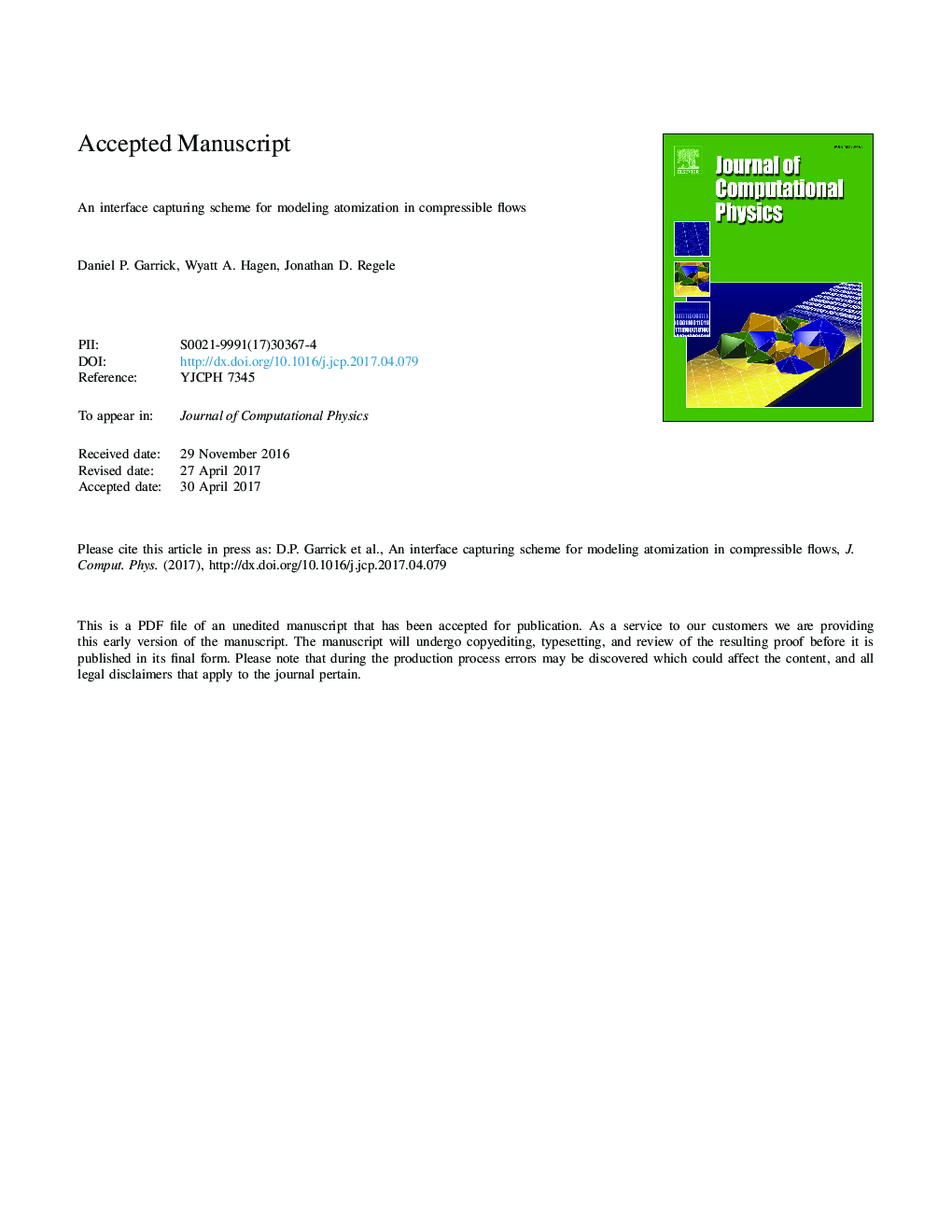| Article ID | Journal | Published Year | Pages | File Type |
|---|---|---|---|---|
| 4967454 | Journal of Computational Physics | 2017 | 48 Pages |
Abstract
The study of atomization in supersonic flow is critical to ensuring reliable ignition of scramjet combustors under startup conditions. Numerical methods incorporating surface tension effects have largely focused on the incompressible regime as most atomization applications occur at low Mach numbers. Simulating surface tension effects in compressible flow requires robust numerical methods that can handle discontinuities caused by both shocks and material interfaces with high density ratios. In this work, a shock and interface capturing scheme is developed that uses the Harten-Lax-van Leer-Contact (HLLC) Riemann solver while a Tangent of Hyperbola for INterface Capturing (THINC) interface reconstruction scheme retains the fluid immiscibility condition in the volume fraction and phasic densities in the context of the five equation model. The approach includes the effects of compressibility, surface tension, and molecular viscosity. One and two-dimensional benchmark problems demonstrate the desirable interface sharpening and conservation properties of the approach. Simulations of secondary atomization of a cylindrical water column after its interaction with a shockwave show good qualitative agreement with experimentally observed behavior. Three-dimensional examples of primary atomization of a liquid jet in a Mach 2 crossflow demonstrate the robustness of the method.
Related Topics
Physical Sciences and Engineering
Computer Science
Computer Science Applications
Authors
Daniel P. Garrick, Wyatt A. Hagen, Jonathan D. Regele,
